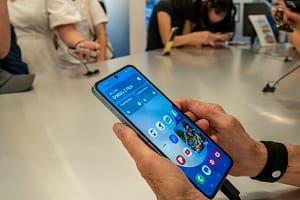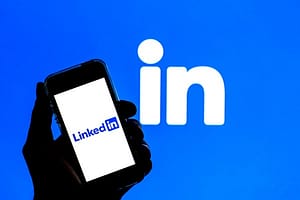The dating app market is no longer just a niche space for digital matchmakers; it’s a global opportunity with massive growth potential. In 2025, startups are entering the space with bold ideas, smarter technology, and a clear understanding of what today’s users really want. But why this sudden surge in dating app investments? Let’s break it down.
The shift from casual swipes to smart connections
In the past, dating apps were often seen as short-term engagement tools, quick swipes, fast chats, and fleeting matches. That’s changing. In 2025, users expect more than just a digital introduction. They’re looking for smart, authentic experiences that reflect real-world relationship needs.
Modern users care about compatibility, shared interests, and digital safety. This opens the door for startups to create platforms that go beyond surface-level features and deliver high-retention, trust-driven dating ecosystems.
The role of niche communities
Instead of trying to compete with the likes of Tinder or Bumble, smart startups are building for niche audiences. These include platforms for:
- Professionals looking for serious connections
- LGBTQ+ communities
- Single parents
- Religion-based matchmaking
- Gamers and fandom communities
- Senior dating
By targeting specific demographics, startups can fine-tune UX, tailor marketing efforts, and create stronger brand loyalty from day one. These platforms don’t just match people, they make them feel understood.
A rising dating app development company will often recommend niche targeting as a key strategy to cut through the noise and lower acquisition costs early in the game.
AI & personalisation are changing the game
2025 is all about personalization. The rise of AI and machine learning is enabling dating apps to offer highly personalized experiences:
- Behavioral-based matchmaking
- Emotion analysis in chats
- Conversation prompts that adapt to user tone.
- Voice-driven matchmaking suggestions
- Predictive analytics to suggest dates, venues, and ideal match times
This level of customization helps users feel seen, and it keeps them coming back. Startups investing in AI now are setting themselves up for long-term engagement and monetization.
If you’re looking to create a dating app that feels truly modern, integrating AI from day one is no longer optional, it’s essential.
Monetisation models are more diverse than ever
Subscription models are just the beginning. Startups are exploring a mix of revenue streams that go beyond “freemium”:
- In-app purchases (profile boosts, read receipts, virtual gifts)
- Video speed-dating rooms with pay-to-join access
- Ad-based revenue in freemium models
- Premium matchmaking services with human consultants
- Affiliate models with restaurants, event partners, and travel platforms
This makes the business case for dating apps stronger than ever. Investors love multi-stream revenue potential, and startups that tap into it stand out.
Investors are paying attention
Dating apps have proven to be incredibly sticky, with high engagement and repeat usage. According to market reports, the global online dating industry is expected to surpass $12.25 billion by 2030.
Early-stage investors are backing dating tech startups that show innovation in user experience, safety, and community design. What’s changed in 2025 is the expectation for apps to be more intentional, safer, and inclusive, especially among Gen Z and millennials.
Rising demand for privacy and safety
Today’s users aren’t just looking for love, they’re looking for platforms that respect their privacy, protect their data, and prevent abuse. Startups that build dating apps with end-to-end encryption, video verification, content moderation, and AI-driven safety alerts are far more likely to gain traction.
In 2025, privacy is not a feature. It’s a deal-breaker. Dating startups that prioritize user safety will earn trust faster, which directly fuels user retention.
The rise of AR, VR & virtual dating rooms
What used to sound futuristic is now a real trend in dating. Startups are blending AR filters, virtual hangouts, and metaverse-style events into their platforms. Imagine users going on a virtual coffee date inside the app, no calendar syncs, no Uber rides, just a real-time, shared VR space.
Some apps also allow users to create 3D avatars and explore themed date zones, such as museums or escape rooms. These features are not just novelties, they improve engagement metrics and session durations significantly.
For startups, this means more time spent on the app, higher ad revenue potential, and stronger user satisfaction.
Why 2025 is the perfect time to launch?
Here’s the reality: user behavior has shifted, but most legacy platforms haven’t fully caught up. Gen Z users want more authenticity, less pressure, and better tools for connection. Meanwhile, older users are re-entering the dating scene and seeking mature, trustworthy platforms.
There’s clear space in the market for fresh players who understand both audiences, and that’s where agile startups have a real edge.
Real-world examples of startup success
Several smaller dating apps that launched in the last two years are now gaining traction:
- Thursday , focuses only on one day a week for dating, simplifying user pressure
- Feeld , thrives by targeting non-traditional relationship dynamics
- LOVELAND , connects people based on emotional compatibility and journaling prompts
What these startups have in common is deep niche understanding, bold brand voice, and smart tech integration. They’re not trying to copy the big players, they’re redefining what dating means in their own language.
Lower development costs, better tools
In 2025, the barrier to entry is lower than ever for startups. Thanks to ready-made APIs, low-code frameworks, and open-source UI kits, you don’t need a team of 50 developers to get started. A lean team with the right dating app development partner can go from idea to MVP in under three months.
Tools like Firebase, WebRTC, Agora, and even GPT integrations have simplified real-time chat, AI-based recommendations, and content moderation workflows.
This means more room to innovate, less time spent on foundational code, and more focus on what actually matters, user experience and retention.
Final thoughts
Startups aren’t just entering the dating app market for the hype, they’re doing it because the opportunity is very real.
User expectations are evolving, and legacy players haven’t kept pace. That leaves room for innovators with fresh ideas, modern UX, and tech-forward execution.
If you’re a founder thinking of stepping into the dating space, the combination of AI, niche targeting, virtual interaction, and trust-based design is your best shot.
The market is primed, the tools are available, and the audience is waiting for something that finally feels right.






Leave a Comment